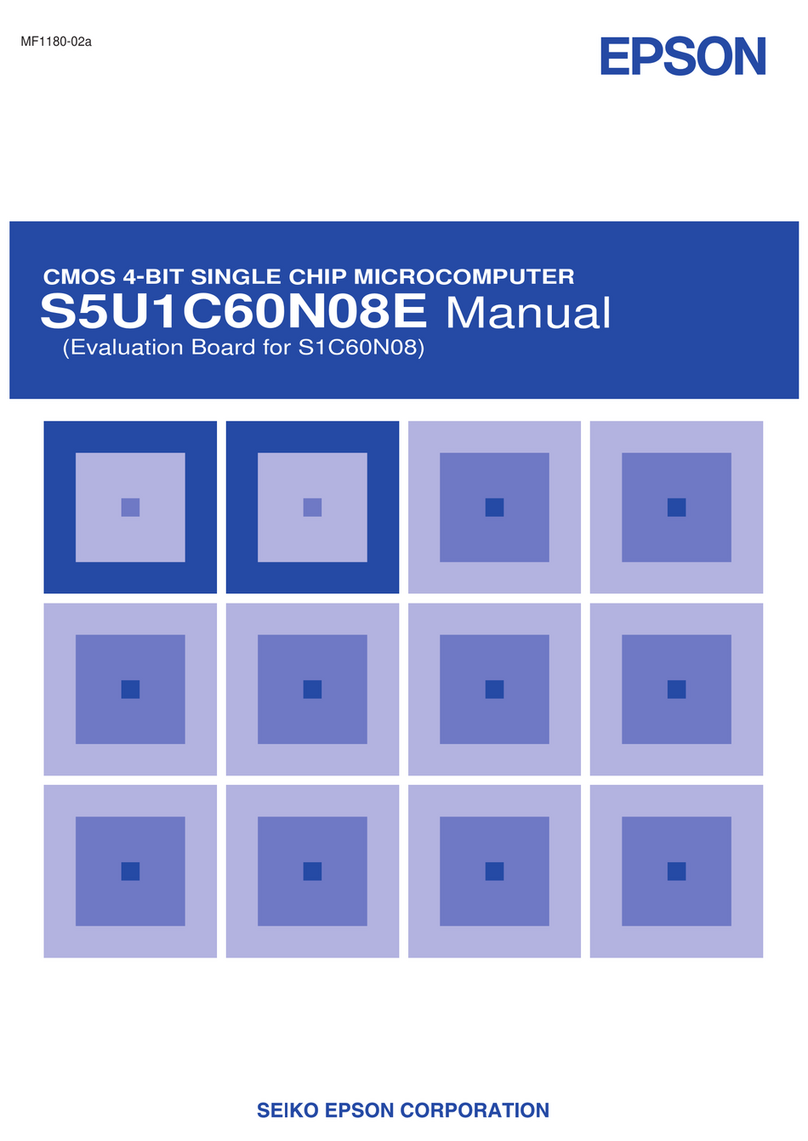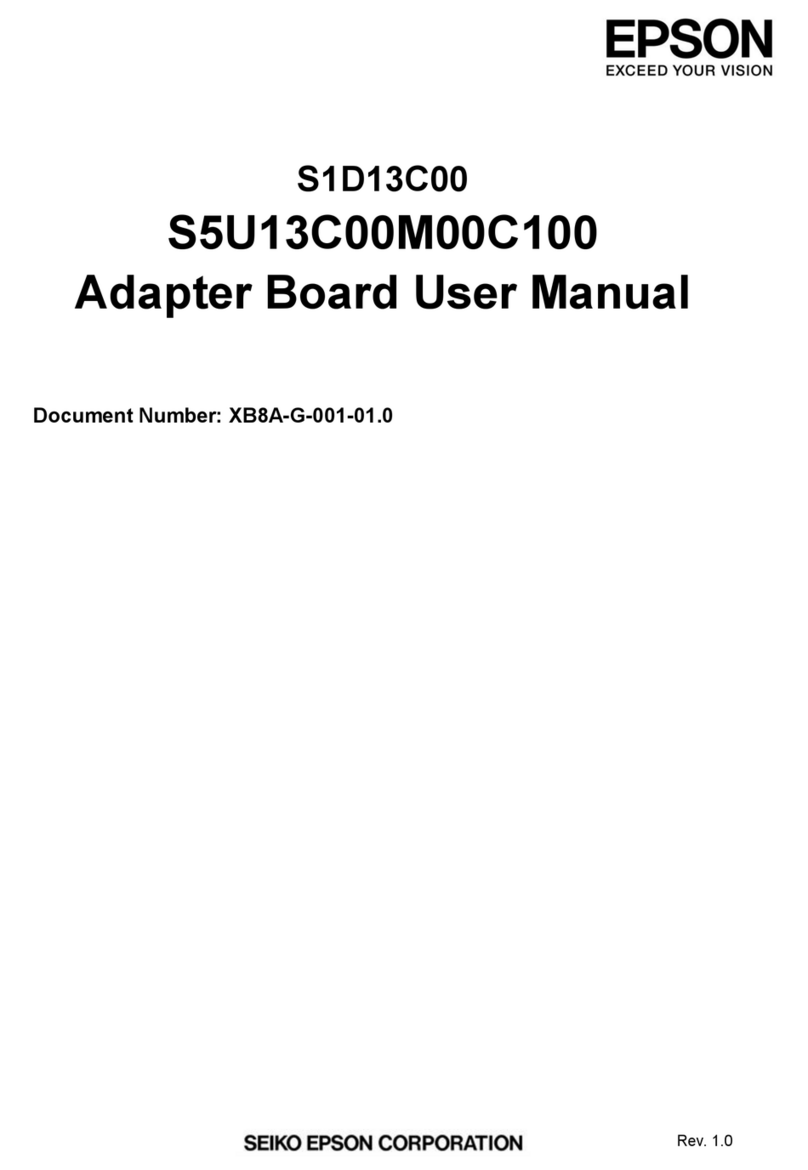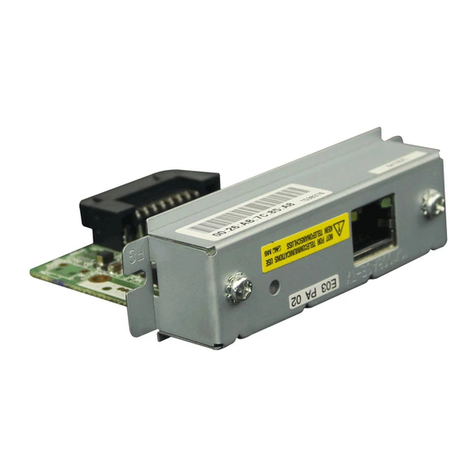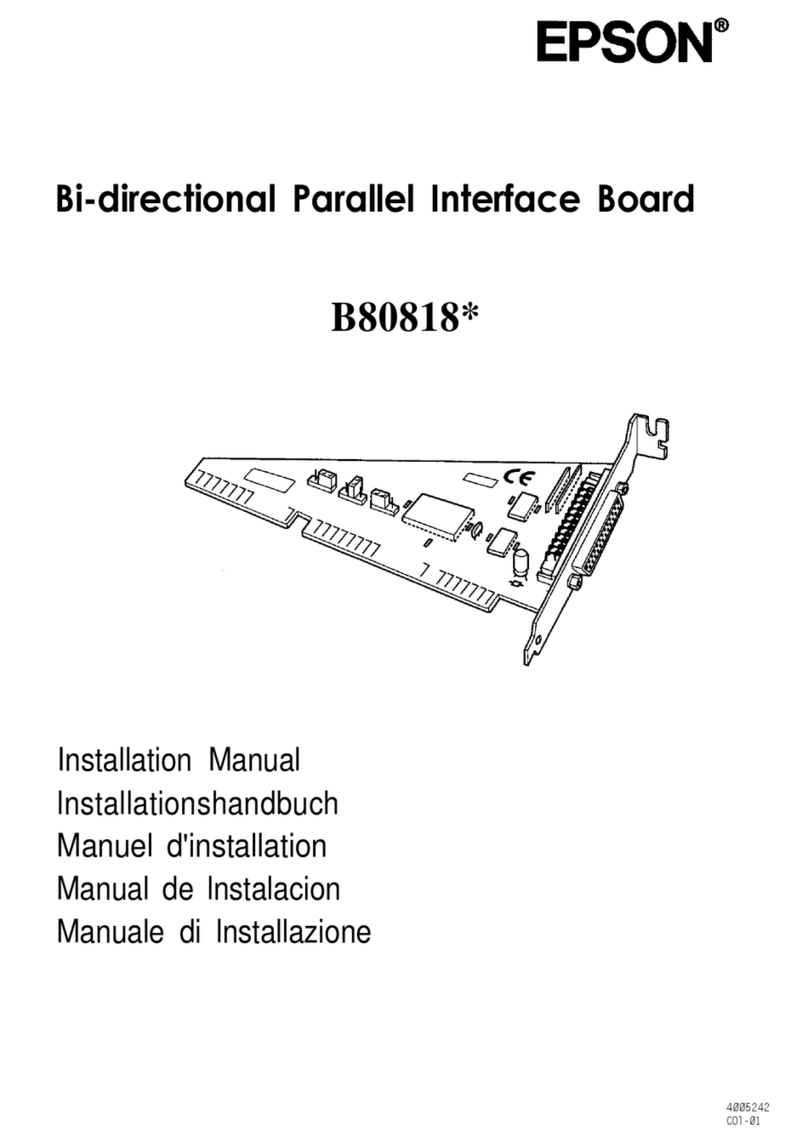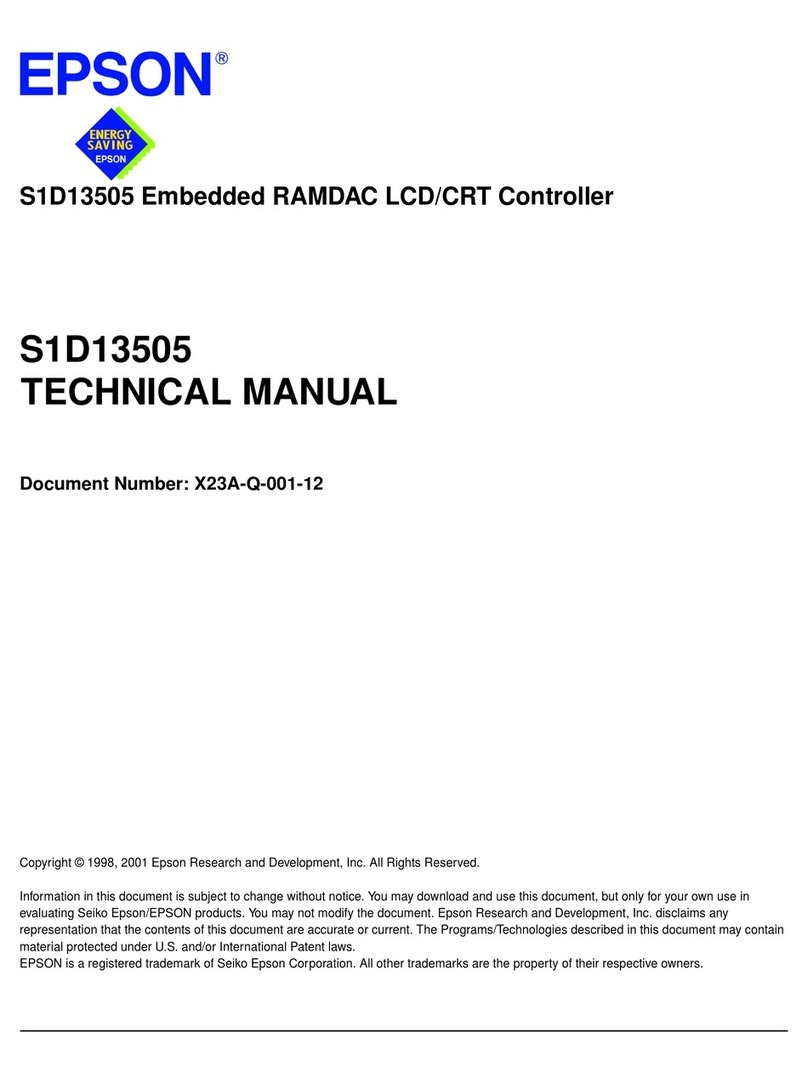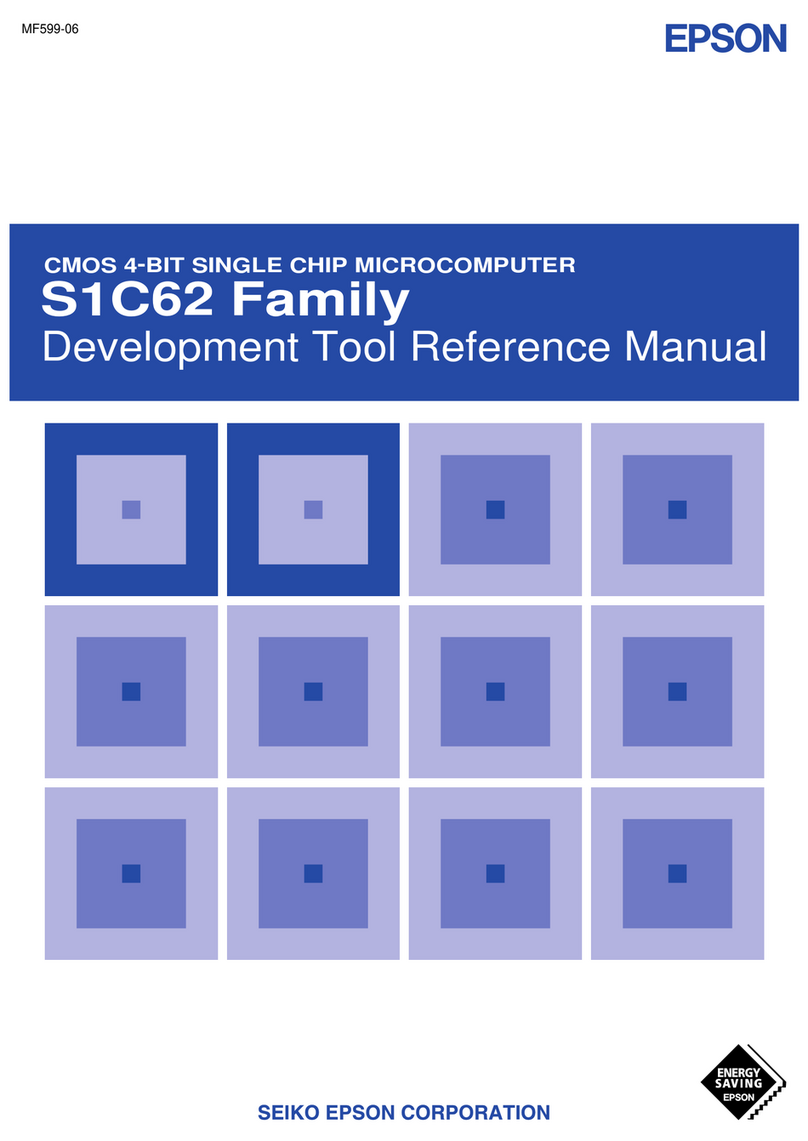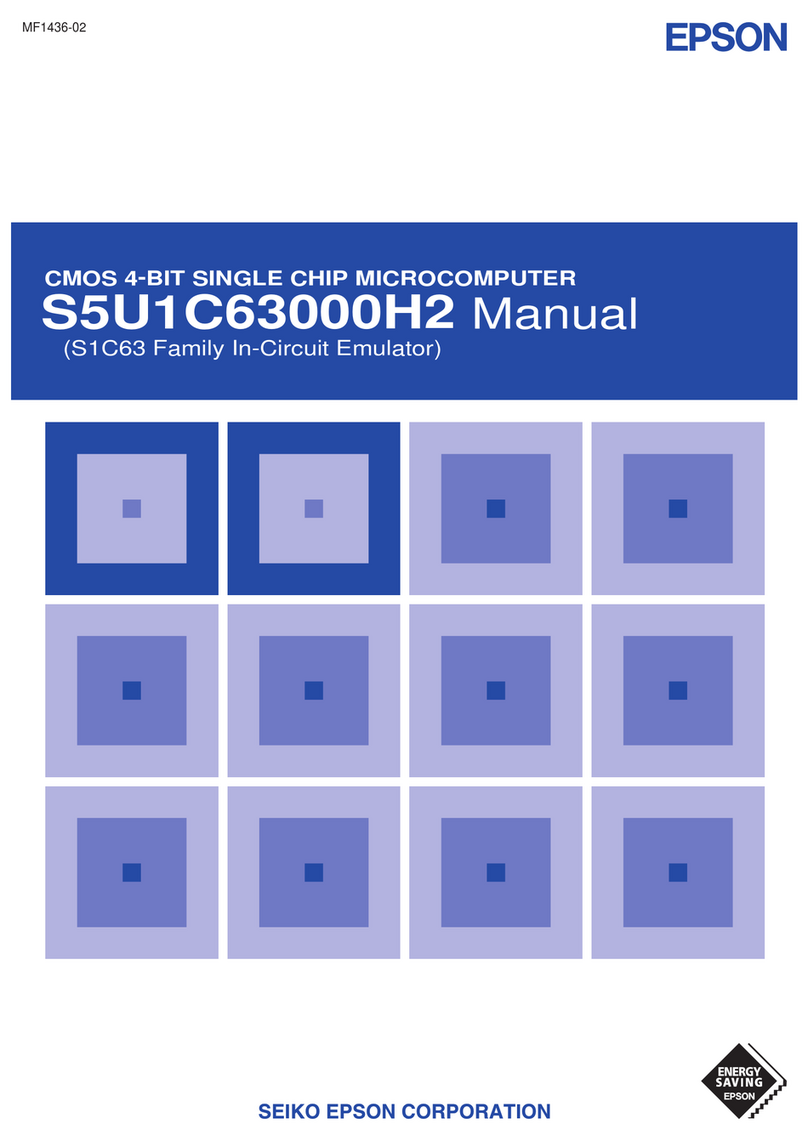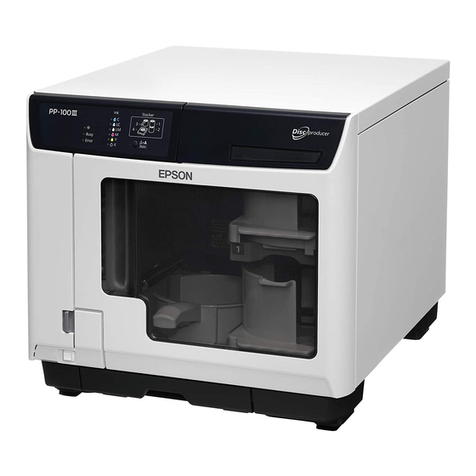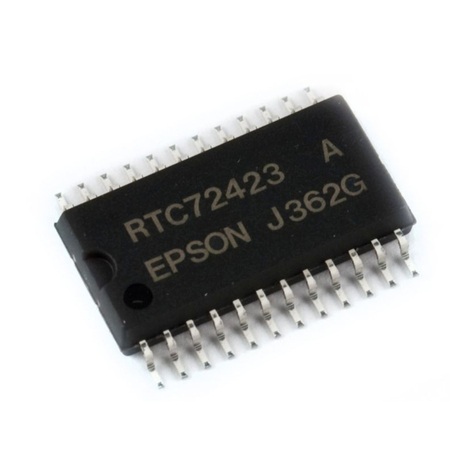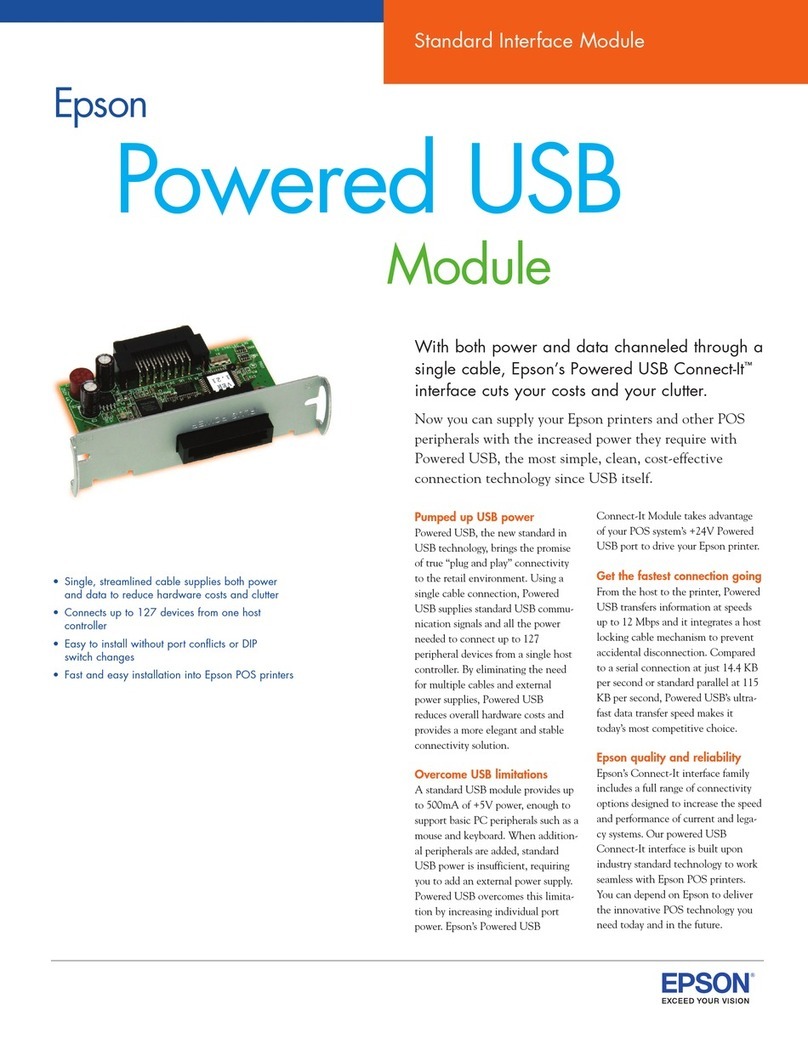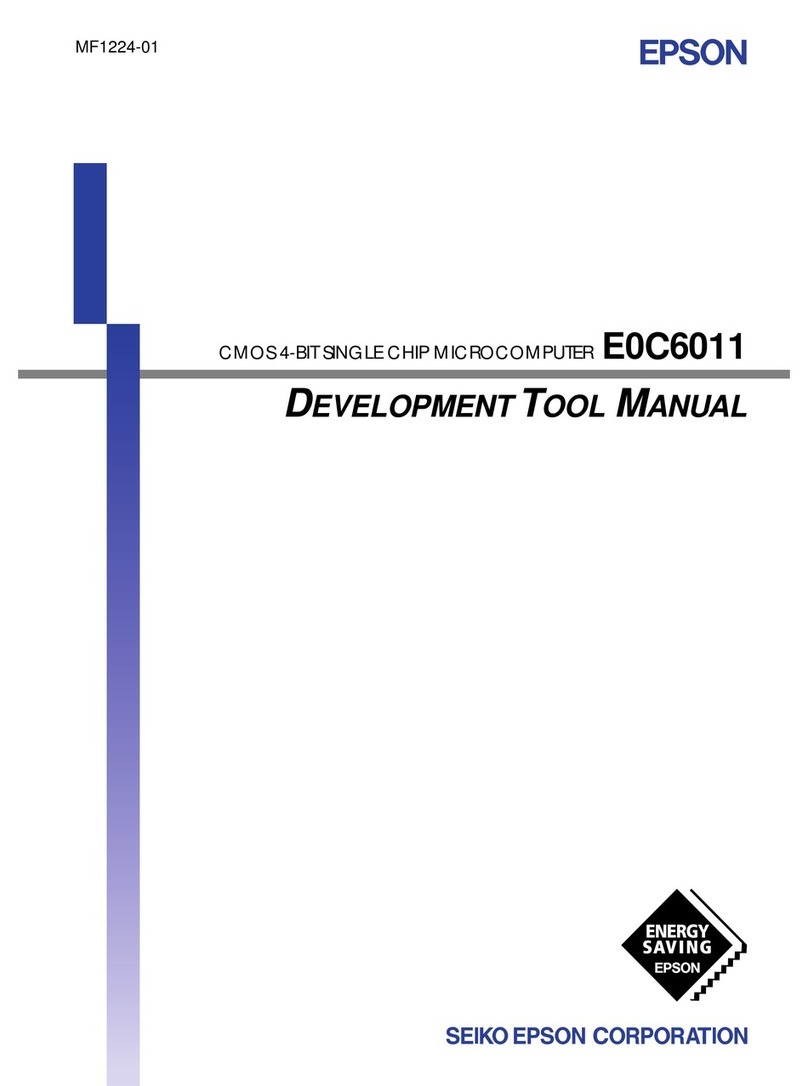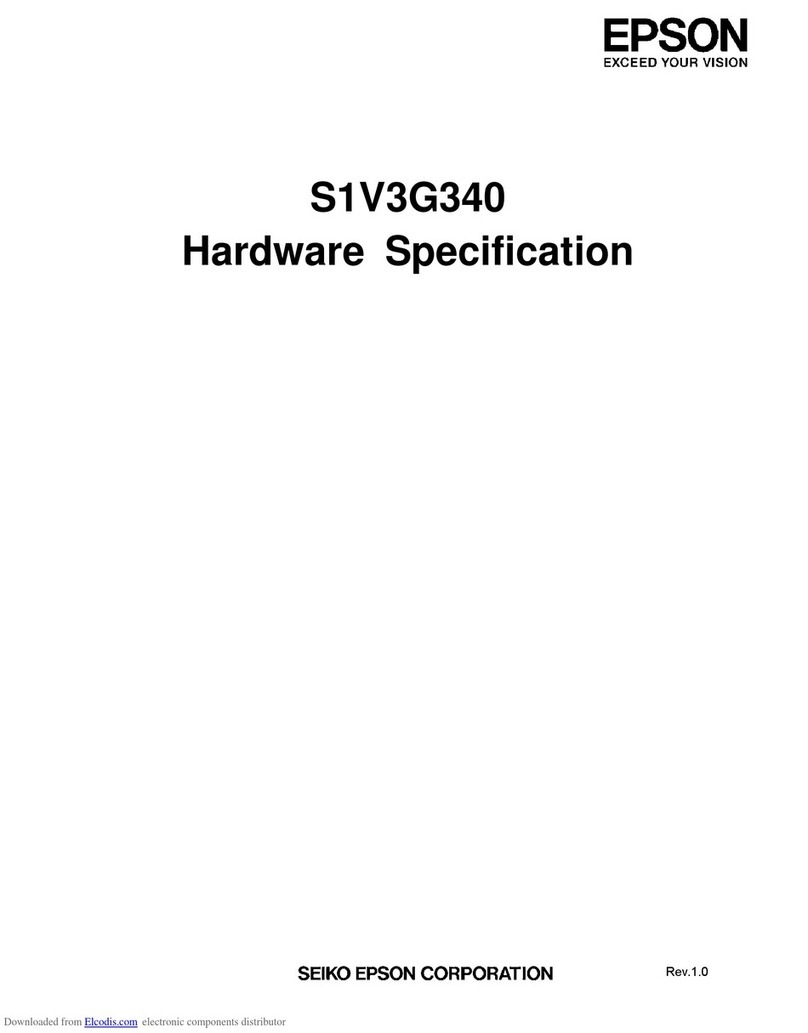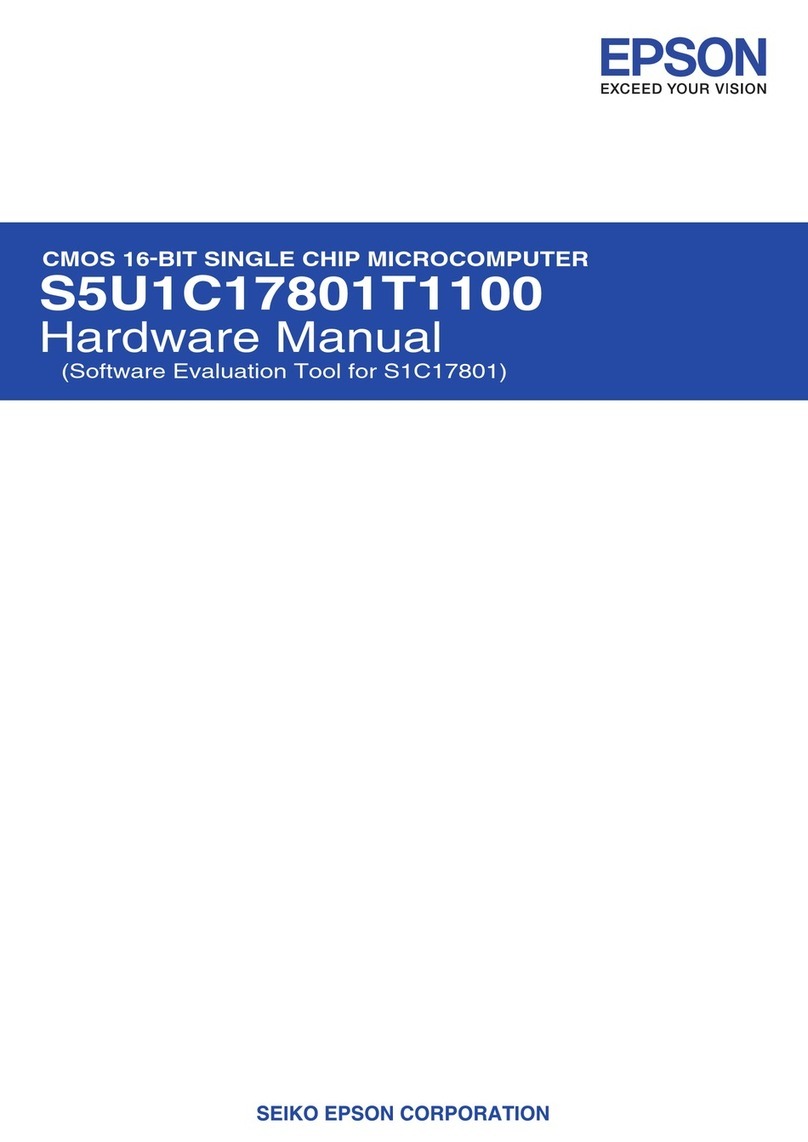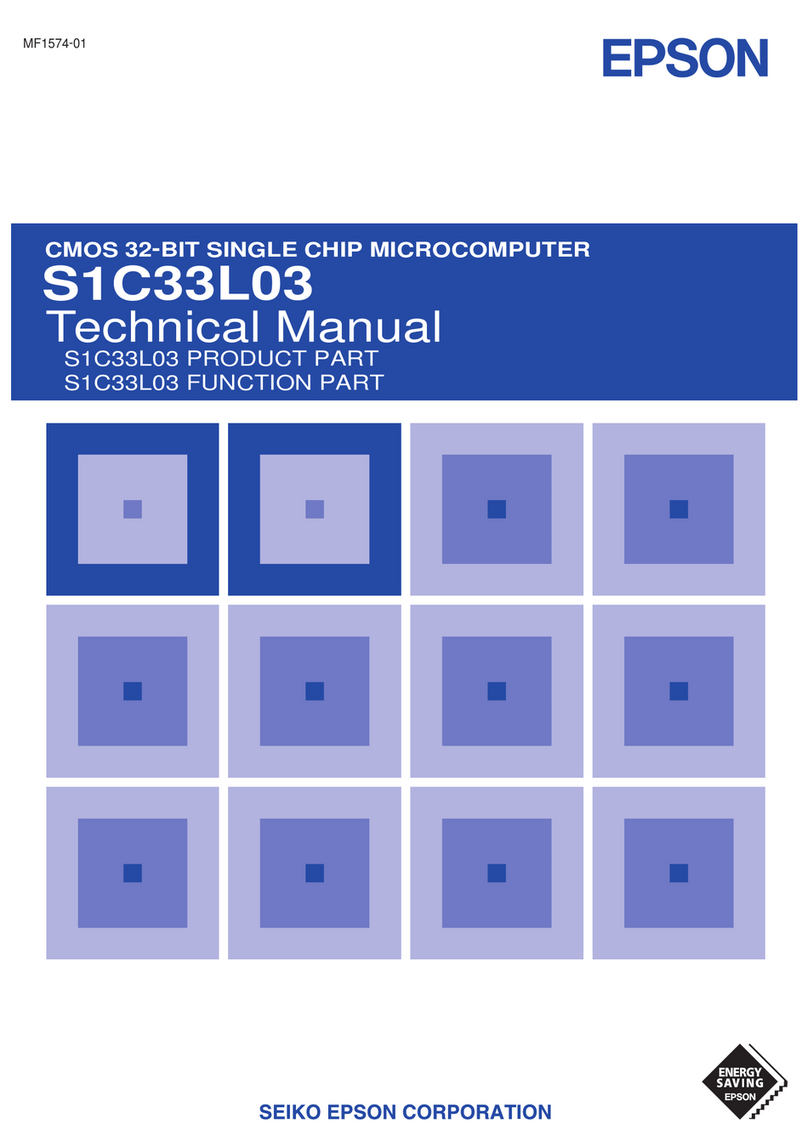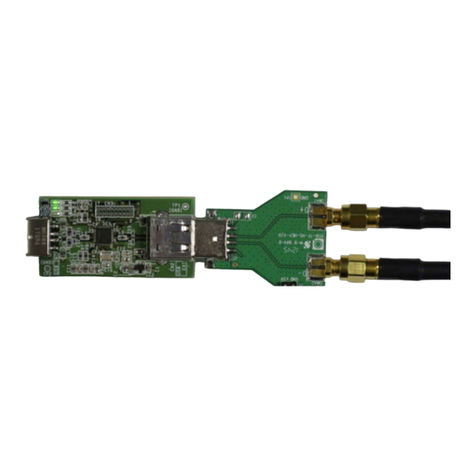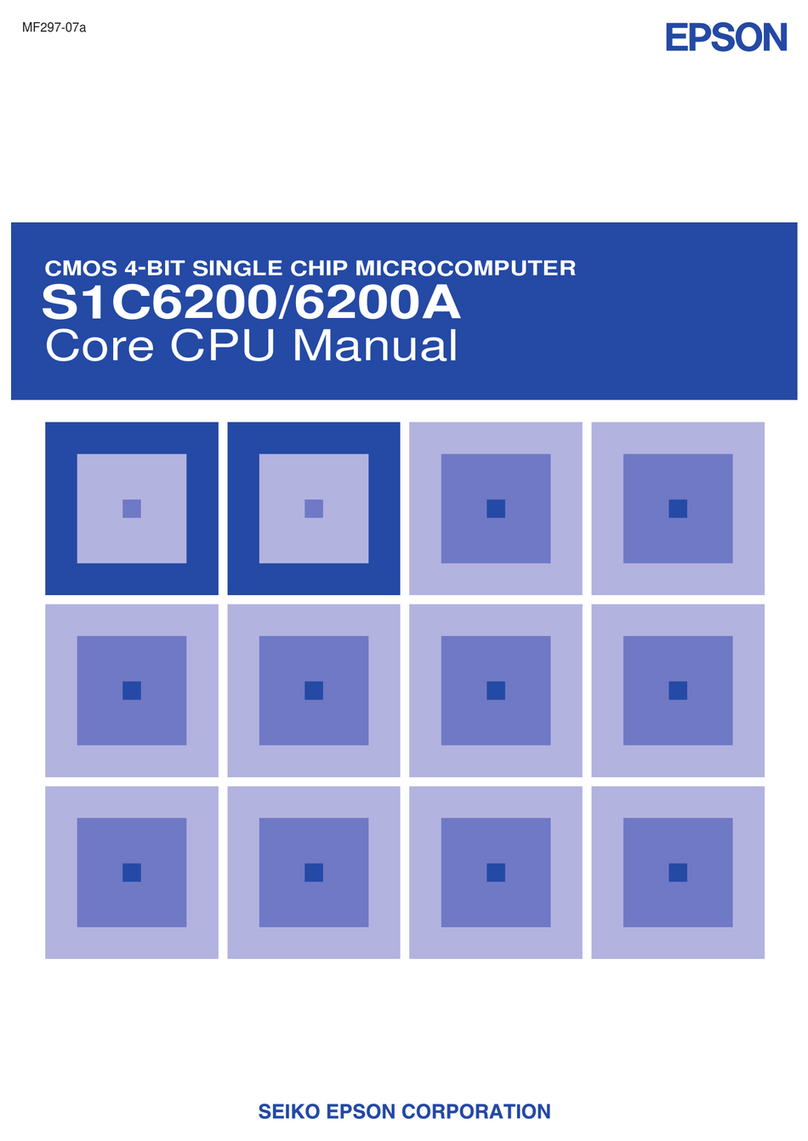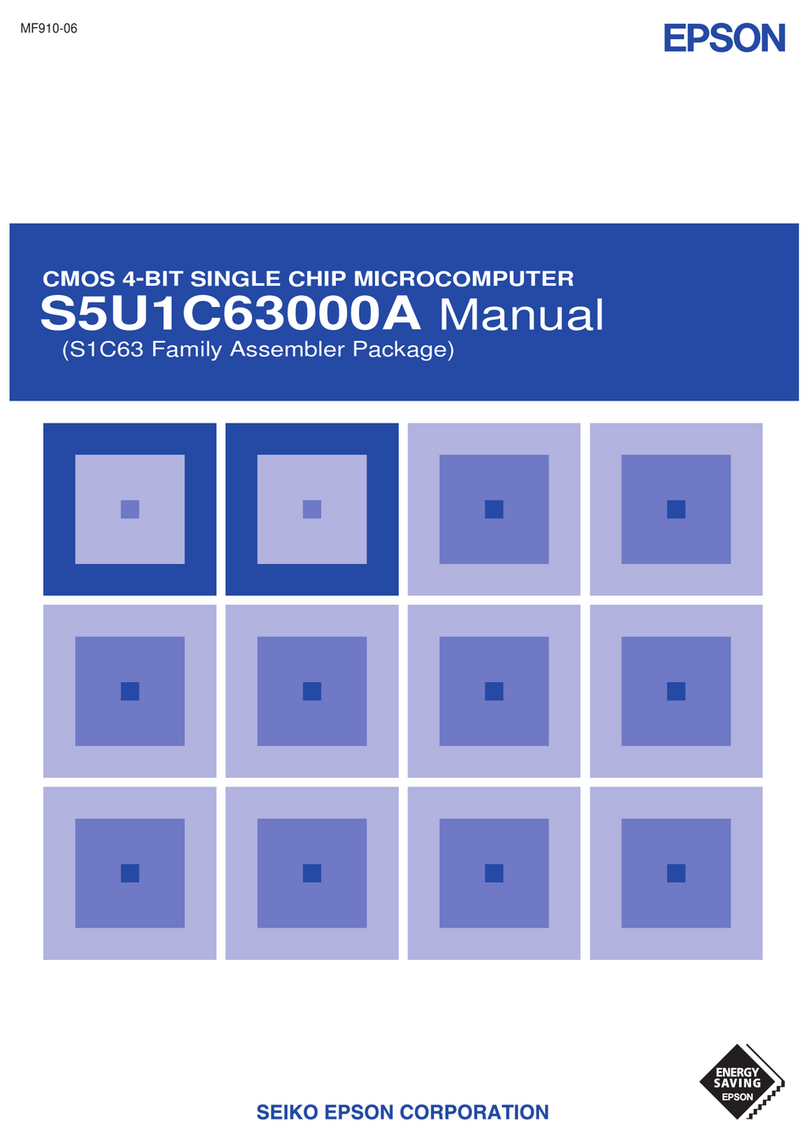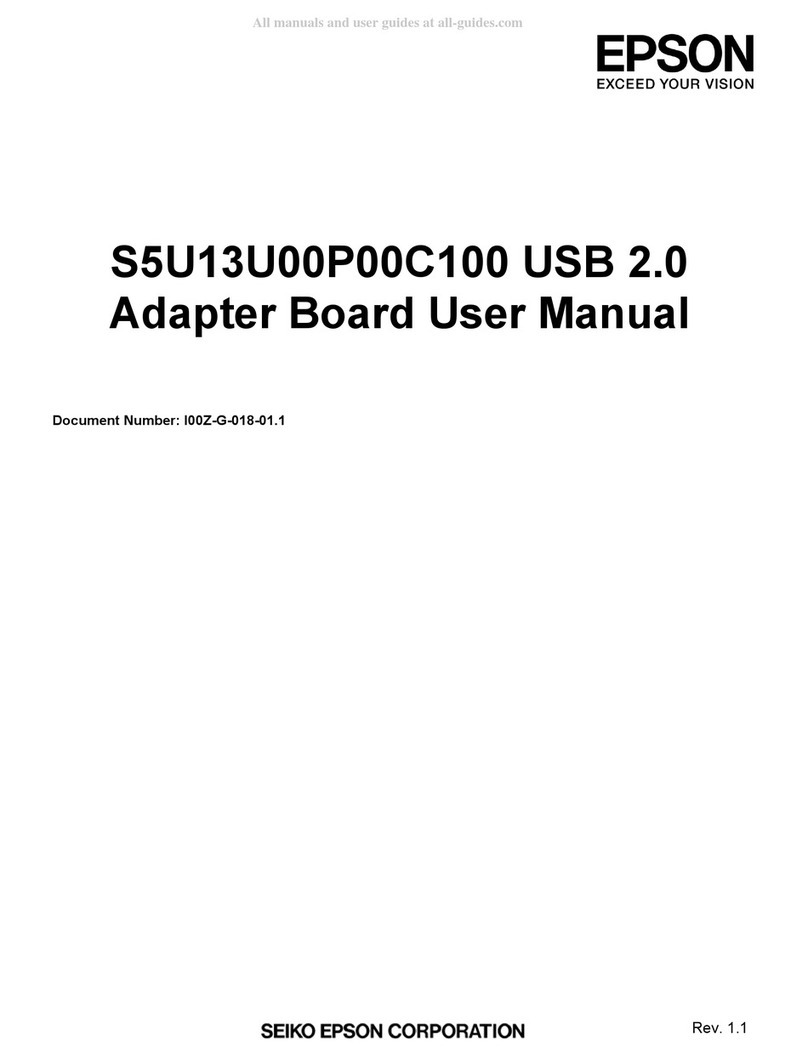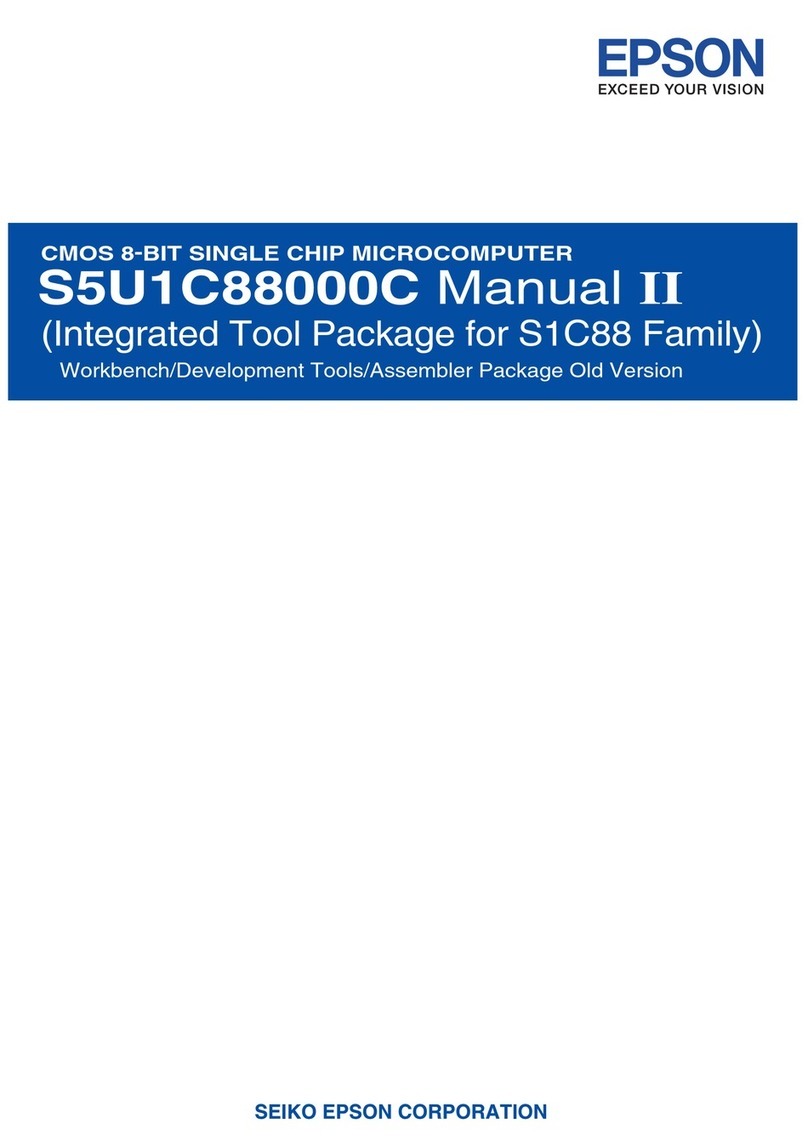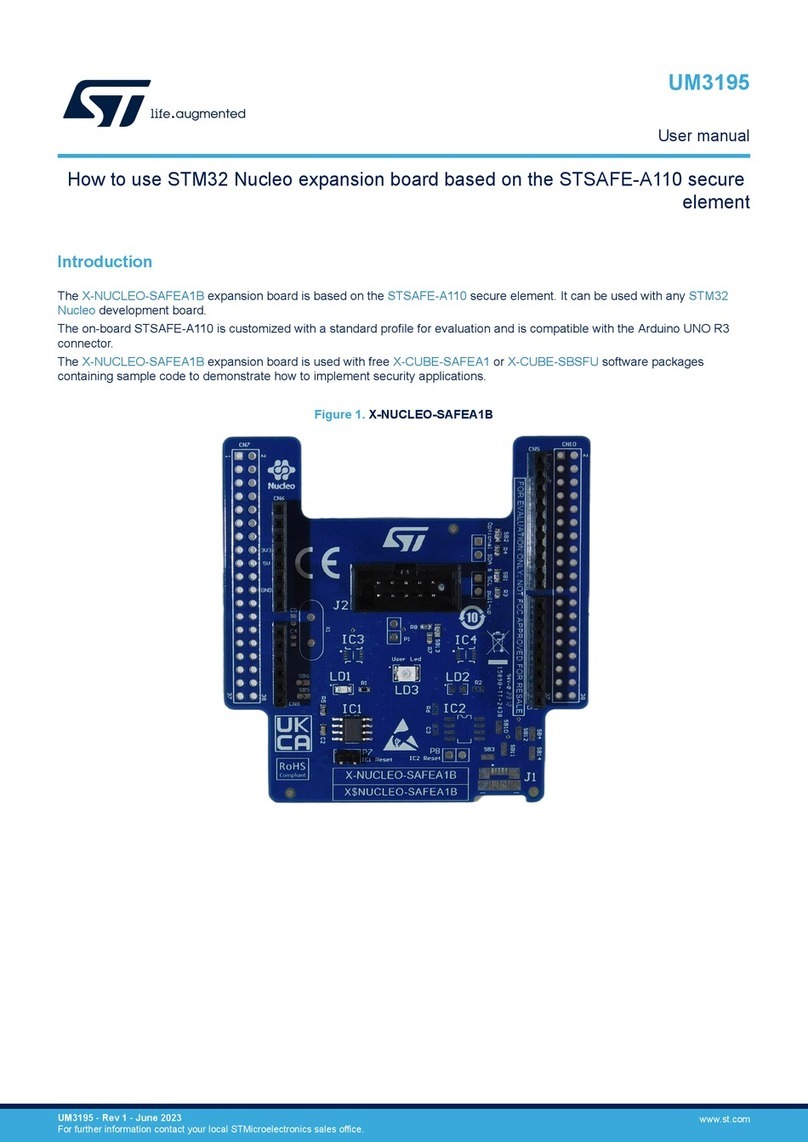E0C6006 TECHNICAL MANUAL EPSON i
CONTENTS
CONTENTS
CHAPTER 1INTRODUCTION ____________________________________________ 1
1.1 Features......................................................................................................... 1
1.2 Block Diagram .............................................................................................. 2
1.3 Pin Layout ..................................................................................................... 3
1.4 Pin Description ............................................................................................. 4
CHAPTER 2POWER SUPPLY AND INITIAL RESET ____________________________ 5
2.1 Power Supply ................................................................................................5
2.1.1 Voltage <VS1> for oscillation circuit and internal circuits ...................... 5
2.1.2 Voltage <VL1–VL3> for LCD driving ......................................................... 5
2.2 Initial Reset ................................................................................................... 6
2.2.1 Reset at power-on....................................................................................... 6
2.2.2 RESET pin .................................................................................................. 6
2.2.3 Oscillation detection circuit....................................................................... 7
2.2.4 Watchdog timer ........................................................................................... 7
2.2.5 Initialization by initial reset....................................................................... 7
2.3 Test Input Pin (TEST) ................................................................................... 7
CHAPTER 3 CPU, ROM, RAM________________________________________ 8
3.1 CPU............................................................................................................... 8
3.2 ROM .............................................................................................................. 8
3.3 RAM .............................................................................................................. 8
CHAPTER 4PERIPHERAL CIRCUITS AND OPERATION__________________________ 9
4.1 Memory Map ................................................................................................. 9
4.2 Watchdog Timer ........................................................................................... 11
4.2.1 Configuration of watchdog timer .............................................................. 11
4.2.2 I/O memory of watchdog timer ................................................................. 11
4.2.3 Programming note..................................................................................... 11
4.3 Oscillation Circuit ....................................................................................... 12
4.3.1 Configuration of oscillation circuit .......................................................... 12
4.3.2 OSC1 oscillation circuit ............................................................................ 12
4.3.3 OSC3 oscillation circuit ............................................................................ 12
4.3.4 Switching the system clock ........................................................................ 13
4.3.5 Clock frequency and instruction execution time....................................... 13
4.3.6 I/O memory of oscillation circuit.............................................................. 14
4.3.7 Programming notes ................................................................................... 14
4.4 Input Ports (K00–K03, K10–K13) ............................................................... 15
4.4.1 Configuration of input port ....................................................................... 15
4.4.2 Interrupt function ...................................................................................... 15
4.4.3 Mask option ............................................................................................... 16
4.4.4 I/O memory of input port .......................................................................... 16
4.4.5 Programming notes ................................................................................... 17
4.5 Output Ports (R00–R03) ..............................................................................18
4.5.1 Configuration of output port ..................................................................... 18
4.5.2 Mask option ............................................................................................... 18
4.5.3 Special output ............................................................................................ 19
4.5.4 I/O memory of output ports....................................................................... 21
4.5.5 Programming note..................................................................................... 21
